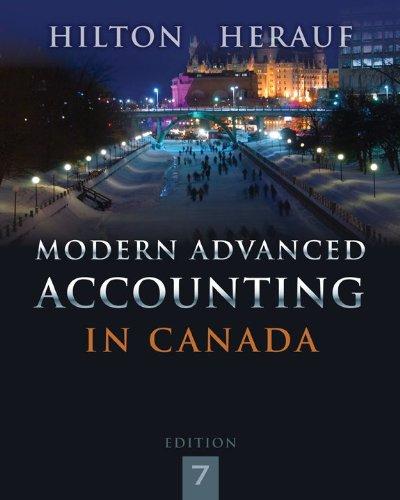Required: (a) Determine who lost the $300,000. (b) Explain how the loss should be allocated on the
Question:
(a) Determine who lost the $300,000.
(b) Explain how the loss should be allocated on the consolidated financial statements.
Several years ago, the Penston Company purchased 90% of the outstanding shares of Swansan Corporation. The acquisition was made because Swansan produced a vital component used in Penston's manufacturing process. Penston wanted to ensure an adequate supply of this item at a reasonable price. The former owner, James Swansan, who agreed to continue managing this organization, retained the remaining 10% of Swansan's shares. He was given responsibility over the subsidiary's daily manufacturing operations but not for any of the financial decisions.
At a recent meeting, the president of Penston and the company's chief financial officer began discussing Swansan's debt position. The subsidiary had a debt to-equity ratio that seemed unreasonably high considering the significant amount of cash flows being generated by both companies. Payment of the interest expense, especially on the subsidiary's outstanding bonds, was a major cost, one that the corporate officials hoped to reduce. However, the bond indenture specified that Swansan could retire this debt prior to maturity only by paying 107% of face value.
This premium was considered prohibitive. Thus, to avoid contractual problems, Penston acquired a large portion of Swansan's liability on the open market for 101% of face value. Penston's purchase created an effective loss on the debt of $300,000: the excess of the price over the carrying amount of the debt as reported on Swansan's books.
Company accountants are currently computing the non-controlling interest's share of consolidated net income to be reported for the current year. They are unsure about the impact of this $300,000 loss. The subsidiary's debt was retired, but officials of the parent company made the decision.
Maturity
Maturity is the date on which the life of a transaction or financial instrument ends, after which it must either be renewed, or it will cease to exist. The term is commonly used for deposits, foreign exchange spot, and forward transactions, interest...
Fantastic news! We've Found the answer you've been seeking!
Step by Step Answer:
Related Book For 

Modern Advanced Accounting In Canada
ISBN: 9781259066481
7th Edition
Authors: Hilton Murray, Herauf Darrell
Question Posted:





